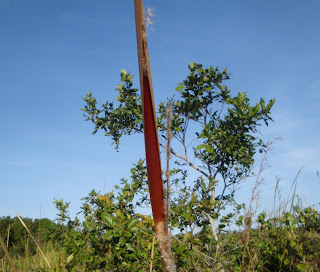Adoration of the Shepherds by Charles LeBrun 1689
All over the Christian world at this time of year you will see Nativity scenes - Jesus, Mary and Joseph in the stable. In the background there will be horses, and perhaps sheep brought by the shepherds, but one crucial animal is missing, one that undoubtedly was flitting around the stables of Bethlehem, the sparrow.
Sparrows (Passer domesticus) originated in the Middle East, and it would have practically impossible to keep them out of a stable. They would probably roost there, and later in the year there would be sparrow nests in the eaves. Where you have one sparrow you have several, being very gregarious little birds. Even in Biblical times they were so familiar as to be taken for granted - in the Gospel of Mathew, Jesus notes how (even) the flight of a sparrow is noted by God.
So common then, and common now, probably the most widely distributed bird in history. They tied their destiny to humans many many years ago, and it's worked. They flourish wherever man does, in his cities and on his farms. But why?

Firstly because they like cereal seeds, and man grows cereals, and make bread. But beyond that they are extremely adaptable. Whilst many birds are picky about nest sites, sparrows will nest almost anywhere, although they prefer holes in trees. The eaves of buildings are common, and almost any dense tree or shrub, but even street lights, apparently attracted to the warmth.
This brings us to the sparrow's 2nd advantage. They are immensely tolerant, "a bold and cheeky bird, but very wary and difficult to approach closely" according to my copy of the Ladybird Guide to British Birds (1956)*. Unlike many birds the noise and confusion of a modern city simply doesn't seem to bother them. Add an above average intelligence, a robust immune system, high fertility and amazing longevity (up to 23 years in captivity and even 19 years in the wild for one Danish bird) and you see why there are so many of them.

And, they're cute. They're tame and friendly and nice to watch. This is more of an evolutionary advantage than you might think. Sparrows were deliberately released into the Americas, in Brooklyn in 1852 and Buenos Aires in 1870, apparently as the teeming European immigrants missed having them around - they're now found from the Northern Territories of Canada to Tierra del Fuego. They are the commonest birds, with pigeons, in many Brazilian cities, from Porto Alegre in the south to Ipatinga in Minas Gerais, and they have even reached the edge of Amazonia.
Where there is man, there are sparrows.
So when you imagine the Nativity scene, shepherds, kings and a baby gurgling in the manger, add a few little brown birds flitting around in the background.
*Brian Vesey-Fitzgerald. The third book of British birds. Ladybird















































